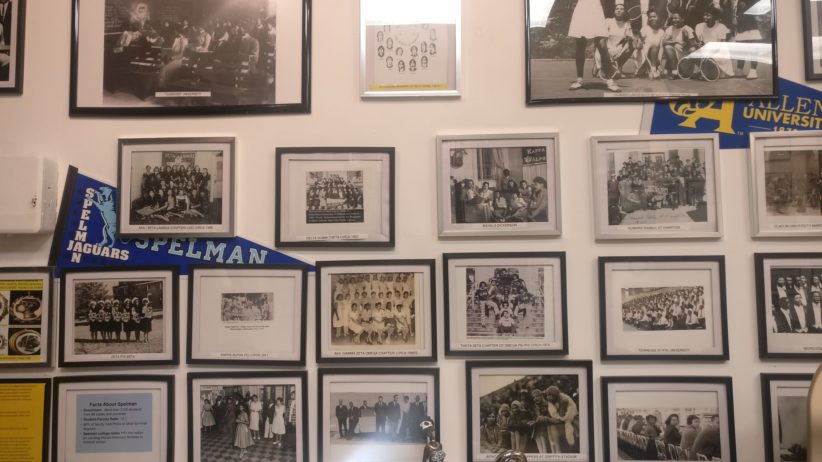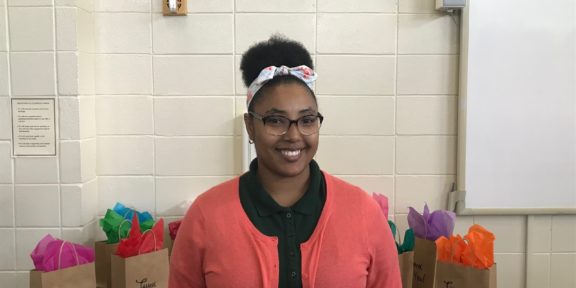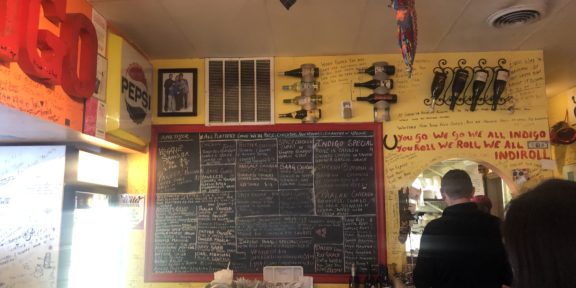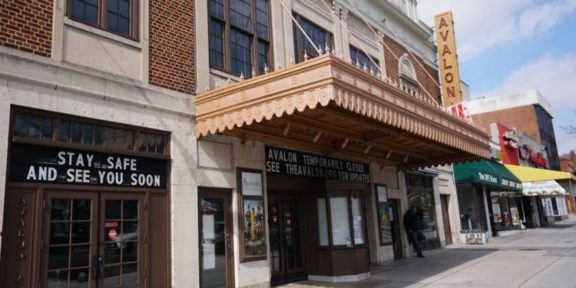An HBCU Digest article recently revealed that historically black colleges and universities enrolled more than 298,000 students at the start of the 2018-2019 academic year, marking the first enrollment increase for the sector since 2011. These numbers are encouraging and could grow even more thanks to institutions such as the HBCU Museum, which celebrated its first anniversary on March 9.
The museum, from the outside, is small and unassuming. Apart from signage, there’s no way to know the depth of history located in its walls. Inside, the 696 square foot space is chock full of artifacts and memorabilia chronicling the most influential black scholars, their contributions to society, and the schools that welcomed them with open arms when they were being denied elsewhere. This museum, the first of its kind, preserves the HBCU legacy.
Terrence Forte, the museum’s Executive Director and founder, comes from a long line of HBCU graduates. Even though he didn’t attend one himself, he capitalized on an idea that he says, came about during a family discussion around the kitchen table.
“With such a widespread family, you have many backgrounds, but one of the things that is definitive is the success of those in our family who attended HBCU’s as opposed to PWI’s, or taking the military route. That was part of the inspiration.”
Along with the desire to bring more attention to HBCU culture, Forte also highlighted the need to dispel stereotypes about successful African-Americans.
“I think there’s a stigma that they have only been to the ‘best’ schools [Primarily White Institutions], and that’s completely wrong. HBCU’s have produced so many great legends, and they should be chronicled for where their education was bestowed.”
Portraits of some of these legends, from trailblazers in law like Thurgood Marshall to advocates for education such as Dr. Mary McLeod Bethune, feature prominently inside the museum. One can even get a glimpse of the founding members of Delta Sigma Theta, and an original copy of a 1972 Ebony magazine featuring HBCU cheerleaders and marching bands.
Although HBCU’s preserve their history in individual ways, Forte’s goal with the museum is to take historic preservation a step further.
“I figured we’re not going to be able to change people’s mindsets unless we start to pull this into a collective format, so people can see the mass excellence that we’ve produced.”
This collective has since been well received. Management Operations Associate Johnny Coleman notes that there is a sense of awe and curiosity when visitors come in, especially amongst young children and students.
“They become ecstatic because they haven’t seen anything like this before. They want to see more. More artifacts, more documentaries, more special exhibits.”
What is it about these schools that garner so much excitement? There’s no denying an HBCU’s outward appeal; the sight of black excellence on the yard, the homecoming festivities, the marching bands and the art of strolling are staples of HBCU life, but there’s much more beyond the surface. Dr. Kevin Glasper, a three-time HBCU graduate and the museum’s Director of Outreach, believes that a significant aspect of the experience can be summed up in one word: togetherness.
“HBCU’s, in spite of some of the financial constraints and challenges with administration, have a tendency to treat you like family. They are very patient with you, and almost over-prepare you. It’s good because the professors and administrators understand that you will need to be prepared far beyond your other counterparts.”
Glasper, whose Bachelor’s, Master’s and Doctorate degrees were earned at Prairie View A&M University, Texas Southern University and Howard University respectively, added that ability to exceed expectations is something that many HBCU’s foster in their students.
“I think it gives you a confidence that you belong, and that you can achieve. “ He went on to highlight some noteworthy statistics about graduates’ success.
“HBCU’s are responsible for at least 75% of all black Ph.D.’s. They’re also responsible for 50% of black pharmacists, and 75% of black veterinarians. I could go on and on.”
In his role at the museum, he helps to build alliances with multiple entities throughout the community.
“We want a partnership with anybody who believes in the values and the mission of HBCU’s. In addition to partnering and getting the word out, we’re trying to acquire grants and funding because we want to offer scholarships to underrepresented populations, particularly students of color.”
The museum is still in its early stages of development but is already making a positive impact in the community. Forte explained that there are several plans for the immediate future, including partnering with the Black Student Fund to establish a financial literacy program.
“We’re going to be giving 5-13% of the revenues to the scholarship fund and then an additional 10% to HBCU’s themselves.”
And for those who say HBCU’s are no longer relevant, he has a strong message.
“We need these institutions. We need to get more of our people to be better for themselves, so they can withhold their style and culture that’s God-given. HBCU’s allow us to take that blessing and amplify it.”





